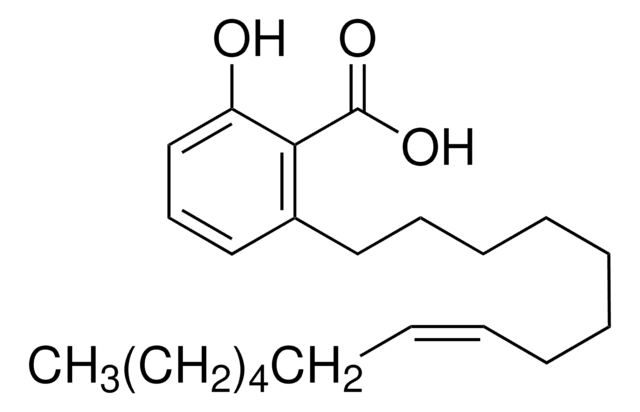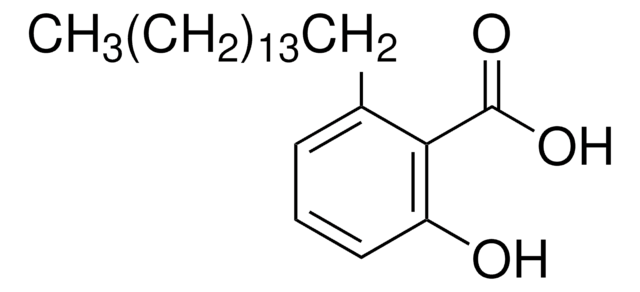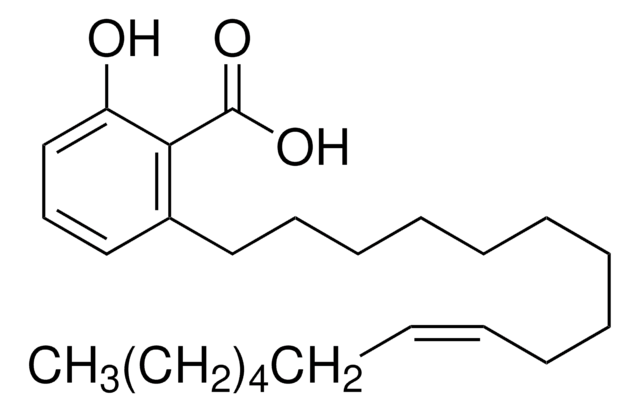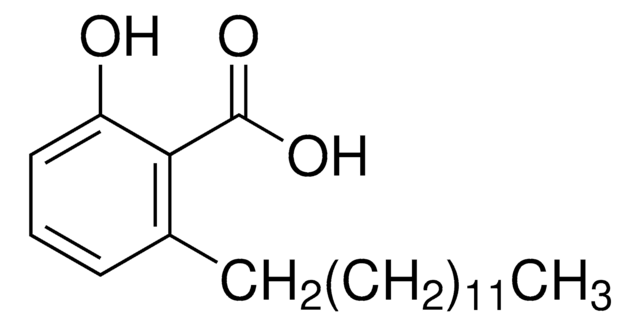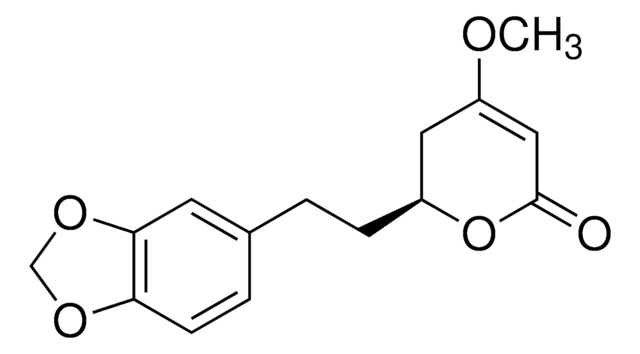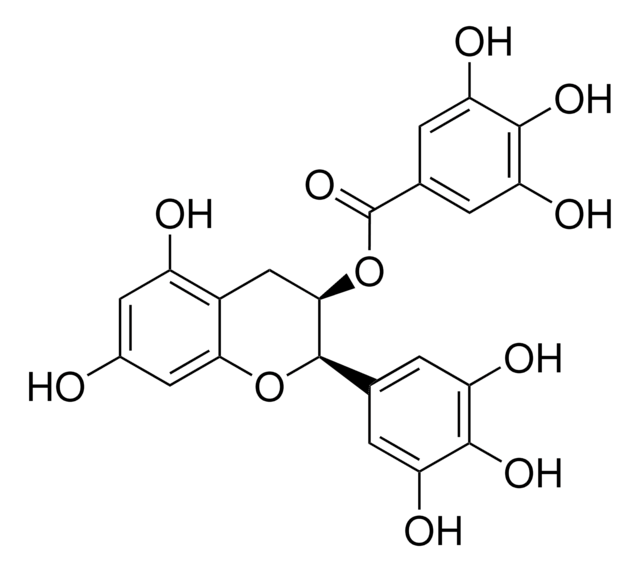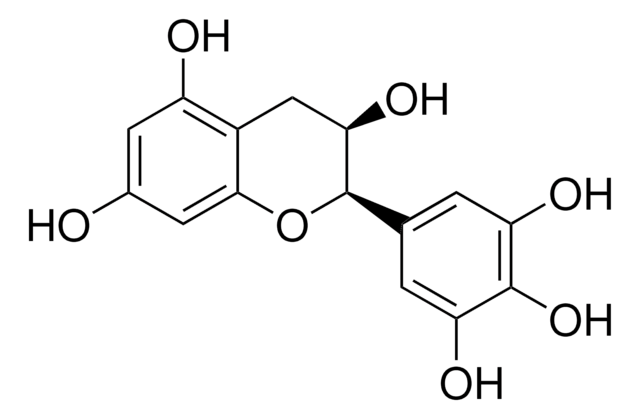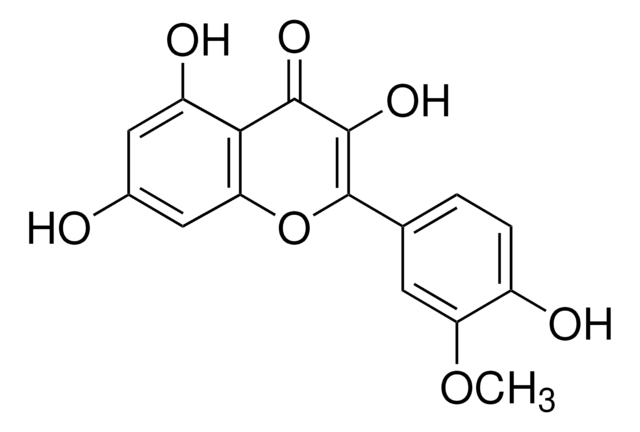02580585
Ginkgolic acid C15:1
primary reference standard
Sinónimos:
6-[(8Z)-Pentadecenyl]-salicylic acid, Ginkgolic acid I
About This Item
Productos recomendados
grado
primary reference standard
fabricante / nombre comercial
HWI
aplicaciones
food and beverages
cadena SMILES
CCCCCC\C=C/CCCCCCCc1cccc(O)c1C(O)=O
InChI
1S/C22H34O3/c1-2-3-4-5-6-7-8-9-10-11-12-13-14-16-19-17-15-18-20(23)21(19)22(24)25/h7-8,15,17-18,23H,2-6,9-14,16H2,1H3,(H,24,25)/b8-7-
Clave InChI
YXHVCZZLWZYHSA-FPLPWBNLSA-N
¿Está buscando productos similares? Visita Guía de comparación de productos
Otras notas
Palabra de señalización
Warning
Frases de peligro
Consejos de prudencia
Clasificaciones de peligro
Aquatic Chronic 4 - Skin Sens. 1
Código de clase de almacenamiento
11 - Combustible Solids
Clase de riesgo para el agua (WGK)
WGK 3
Punto de inflamabilidad (°F)
509.9 °F - (calculated)
Punto de inflamabilidad (°C)
265.5 °C - (calculated)
Elija entre una de las versiones más recientes:
Certificados de análisis (COA)
¿No ve la versión correcta?
Si necesita una versión concreta, puede buscar un certificado específico por el número de lote.
¿Ya tiene este producto?
Encuentre la documentación para los productos que ha comprado recientemente en la Biblioteca de documentos.
Los clientes también vieron
Nuestro equipo de científicos tiene experiencia en todas las áreas de investigación: Ciencias de la vida, Ciencia de los materiales, Síntesis química, Cromatografía, Analítica y muchas otras.
Póngase en contacto con el Servicio técnico